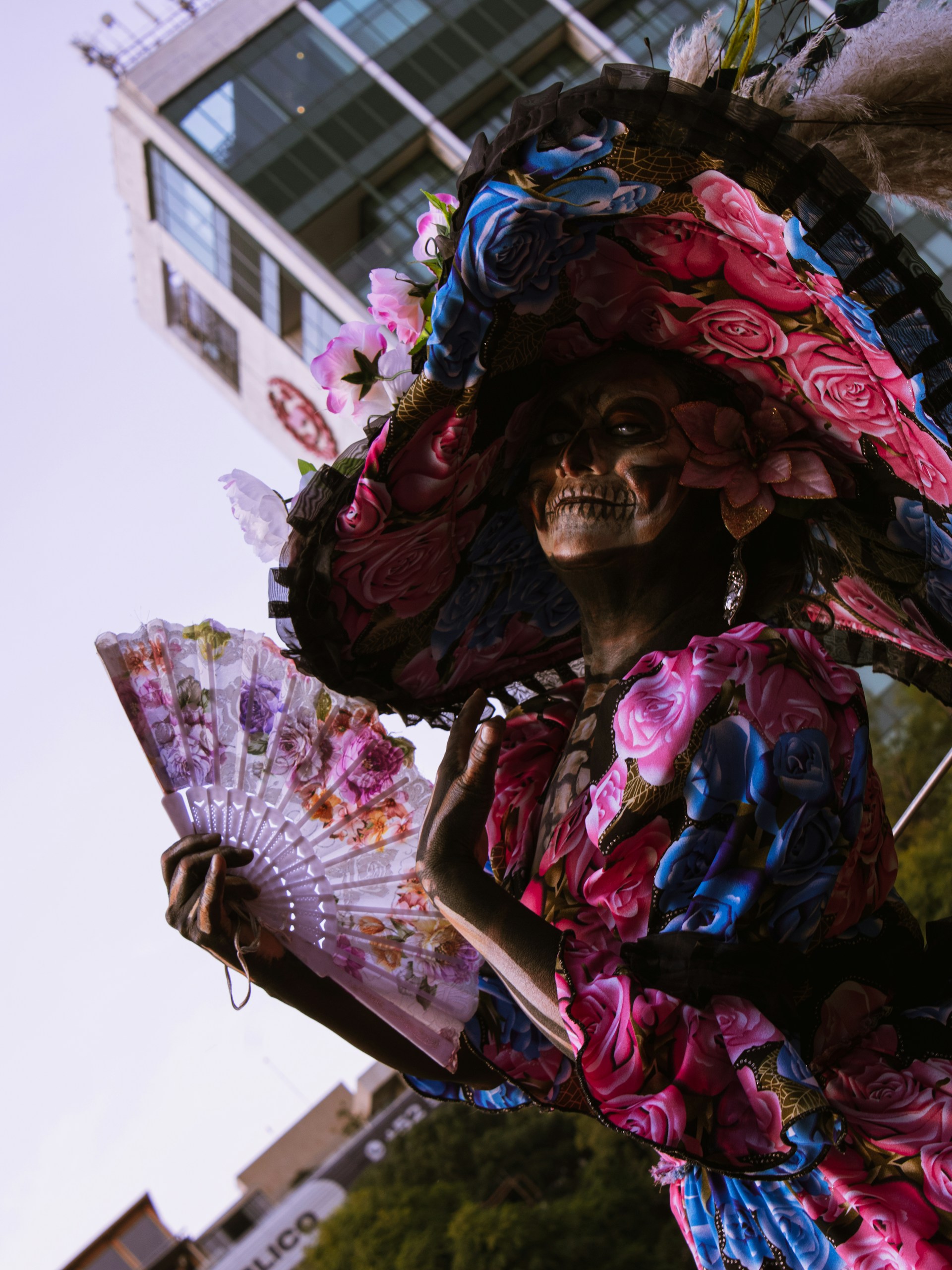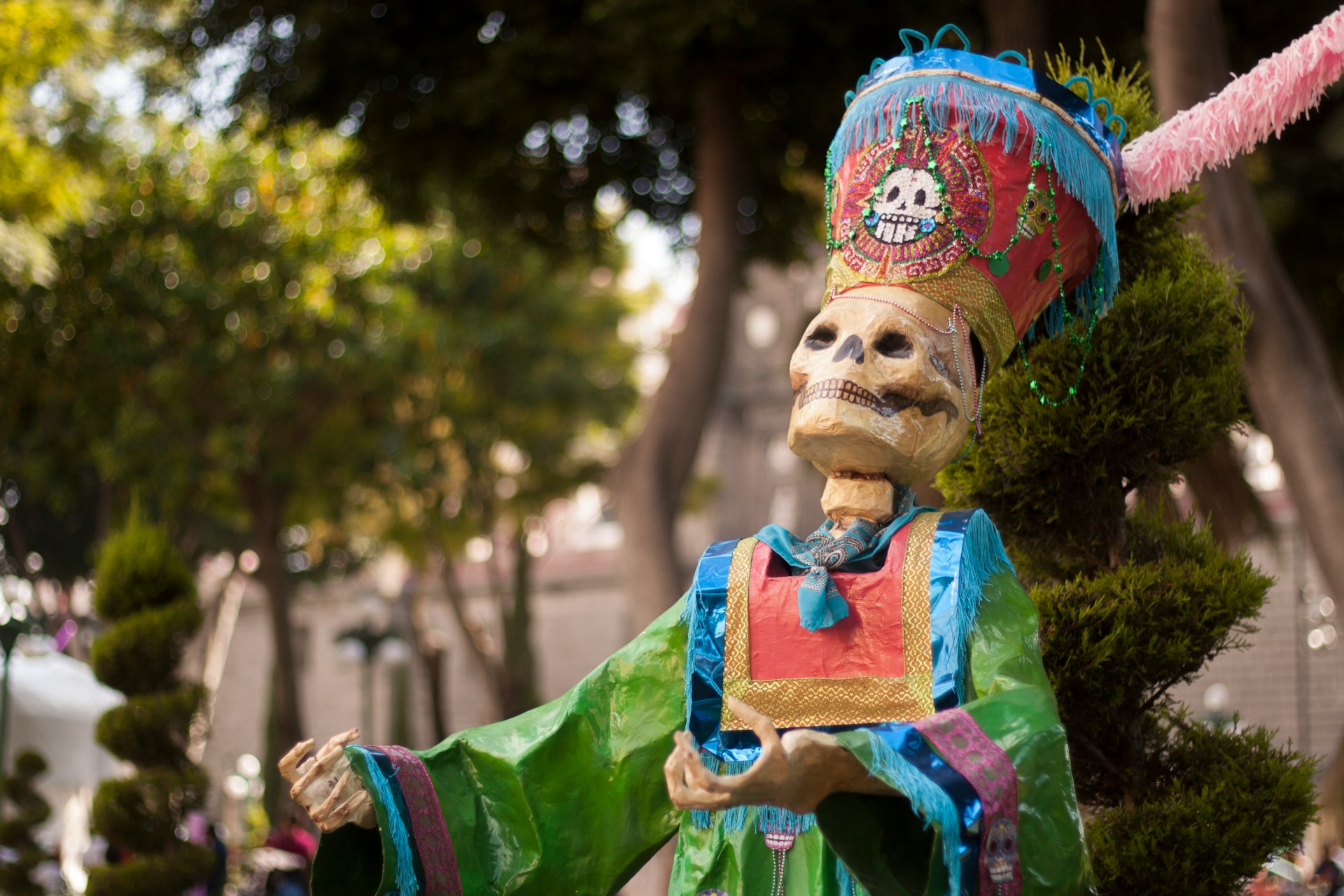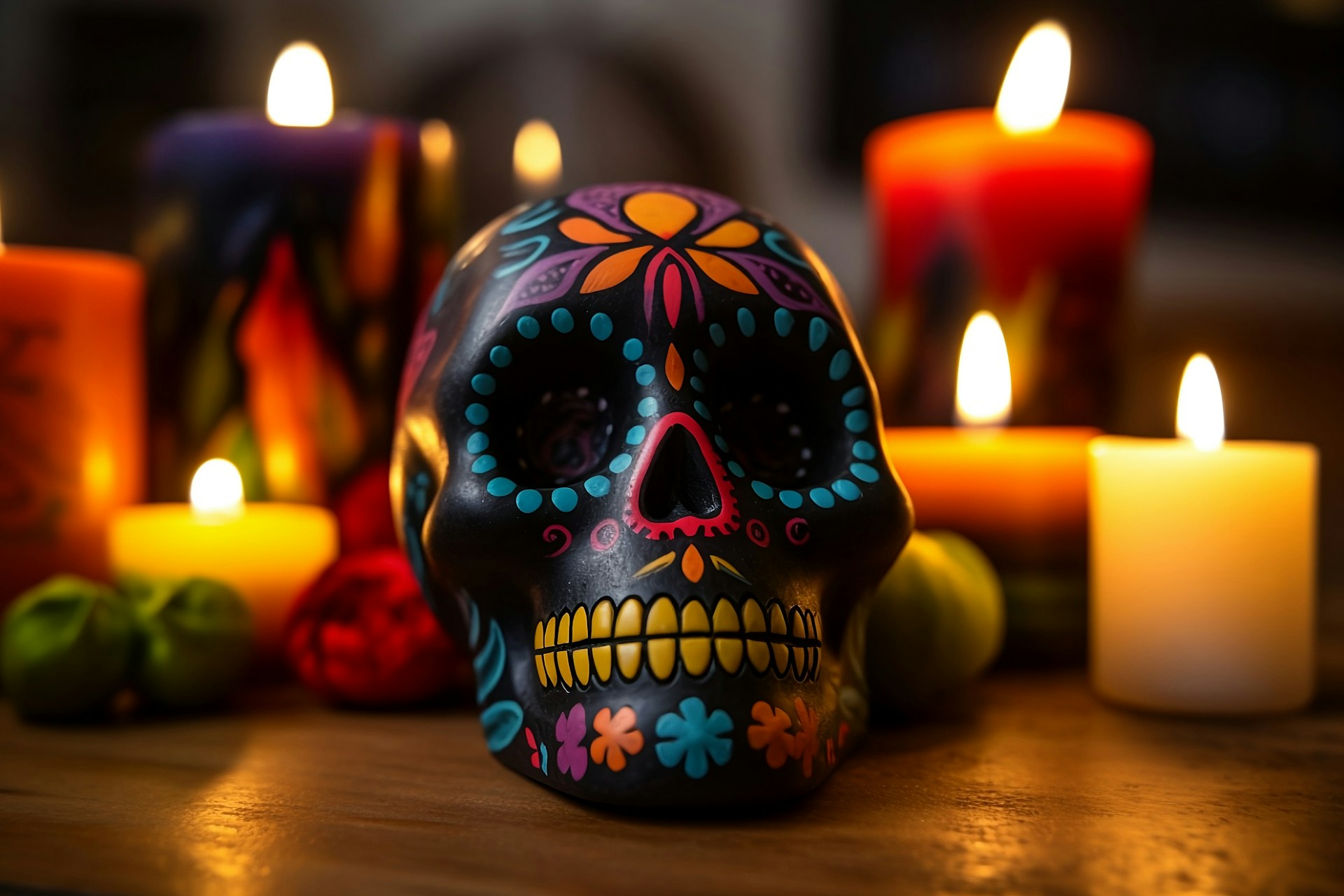
Charalambos Stylianou
Día de Muertos (Day of the Dead) is an ancient Mexican tradition that bridges the gap between life and death. Celebrated on November 1st and 2nd, the holiday sees families come together to remember their deceased loved ones. Graves and homes are transformed into living monuments that combine solemnity and joy.
The festival has its roots in indigenous Aztec rituals, but it has become a unique blend of Catholic influences and centuries-old customs that continue to attract millions in Mexico and beyond.

Día de Muertos has its origins in the Aztec civilization, where skulls symbolized respect for the dead more than a millennium ago. After the Spanish conquest in the 16th century, Indigenous customs were integrated into Catholic traditions, and honouring the dead became linked to All Saints' Day and All Souls' Day.
November 1st (Día de los Angelitos) is dedicated to the memory of deceased children, while November 2nd pays tribute to adults. In their homes or cemeteries, families set up rendas or altars decorated with marigolds, candles, and the favourite foods of the deceased.
Graveside gatherings feature music, food, and dancing to invite the spirits back for an evening of joyous memories. "A person is truly dead when he is forgotten," explains author and end-of-life expert Mary J. Andrade. When people build an altar, they think of the person who died and… they want to accept it with dignity.”

This sentiment reflects a very personal connection to this holiday that stretches from colonial times to Mexican independence and even to its 36th anniversary. Then came years of political upheaval. Día de Muertos has adapted over the centuries and remains a religious practice for many in rural Mexico, but in urban centres, it has taken on secular and nationalistic overtones.
For some, the holiday has become a vehicle for political satire. In the early 20th century, Mexican artist José Guadalupe Posada painted La Calavera Catrina, a skeleton dressed in European clothing.
The image quickly became iconic and appeared in Diego Rivera’s murals, depicting both the inevitability of death and the humour that comes with it. Popular across borders, Día de Muertos has become an important part of Mexico's cultural heritage, celebrated in the United States and internationally.

Schools and museums display altars and papel picado folk art and hold events to educate younger generations about the customs of the holiday. In the 1970s, the Chicano movement embraced Día de Muertos to celebrate Mexican-American identity, and in the 1980s altars appeared for victims of the AIDS epidemic, drug violence in Mexico, and major tragedies such as the El Paso Walmart shooting.
Anthropologist Claudio Lomnitz believes the universal message of the holiday contributed to its success: "It creates a space of communication between the living and the dead. "Where else will there be an event like this?" he asked, pointing to the festival's profound ability to reconnect people with their roots and loved ones.
As Día de Muertos grows in popularity around the world, its message remains clear: death is a part of life, and memory keeps the spirit alive. For those who celebrate, the holiday is a moment to confront mortality, cherish memories and pay respect to family and heritage in a celebration that embraces life itself.






























